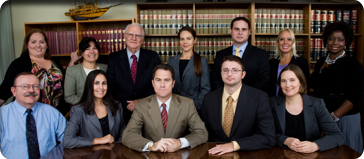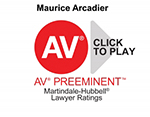Overcoming Pretext in USERRA Cases
In USERRA cases, shifitng reasons for adverse employment action should be usable as evidence of pretext
- THIS COURT SHOULD GRANT CERTIORARI SINCE THERE IS A SPLIT IN THE CIRCUITS WITH RESPECT TO WHETHER AN EMPLOYER’S SHIFTING EXPLANATIONS OR NEWLY ARTICULATED REASONS FOR ITS ADVERSE ACTION IS EVIDENCE WHICH A FINDER OF FACT COULD DETERMINE TO BE PRETEXTUAL
In employment discrimination[1] cases this Court has stated: “… [T]o demonstrate that the proffered reason was not the true reason for the employment decision….” pretext may be shown by “either directly persuading the court that a discriminatory reason more likely motivated the employer or indirectly by showing that the proffered explanation is unworthy of credence.” Texas Department of Community Affairs v. Burdine, 450 U.S. 248, 256 (1981) (citing McDonnel Douglas Corp. v. Green, 411 U.S. 792, 804-805 (1973)).
This Court explained in Reeves v. Sanderson Plumbing Products, Inc., 530 U.S. 133, 148 (2000) that: “In appropriate circumstances, the trier of fact can reasonably infer from the falsity of the explanation that the employer is dissembling to cover up a discriminatory purpose.” Id. A jury may infer that evidence is fabricated and thus unworthy of credence. Id. (citing Wilson v. United States, 162 U.S. 613, 621 (1896)). This Court has also found that: “Common law traditionally has allowed witnesses to be impeached by their previous failure to state a fact in circumstances in which that fact naturally would have been asserted.” Jenkinsv. Anderson, 447 US 231, 238-39 (1980) (citing 3A J. Wigmore, Evidence § 1042, p. 1056 (Chadbourn rev. 1970)).[2]
The Eleventh Circuit held that shifting explanations given by an employer at different points in time to justify its adverse actions against a Petitioner are not inconsistent and are not prextual evidence as a matter of law. A majority of other Circuits hold that shifting and inconsistent explanations given by an employer at different points in time to justify its adverse actions against an employee is evidence of pretext.
The Eleventh Circuit holds that: additional, but previously undisclosed reasons for an employer’s decision cannot demonstrate pretext. Tidwell v. Carter Prod., 135 F.3d 1422 1428 (11th Cir. 1998) (citing Zaben v. Air Prod. & Chemicals, Inc., 129 F.3d 1453, 1458-59 (11th Cir. 1997) (stating there is no pretext where, although the employer offered differing explanations for its decisions its reasons were not necessarily inconsistent)).
All other Circuits that have directly addressed this issue have held that an employer’s changing rationale or reasons articulated only after a charge of discrimination was levied is evidence of pretext. see Geleta v. Gray, 645 F.3d 408, 413-414 (D.C. Cir. 2011) (stating inconsistent justifications are probative of pretext); Fitzgerald v. Action, Inc., 521 F.3d 867, 873 (8th Cir. 2008) (stating different justifications give rise to a genuine issue of fact with respect to pretext since they suggest that none of the official reasons was the true reason); Simple v. Walgreen Co., 511 F.3d 668, 671 (7th Cir. 2007) (stating inconsistent explanations, on one occasion saying that Jonland outshined you [the plaintiff] in market appeal and on another that she would be better at improving employee morale is suggestive of pretext); McLean Trucking Co. v. NLRB, 719 F.2d 1226, 1231 (4th Cir. 1983) (stating unable to offer a consistent and coherent good motive, the employer cannot complain if its vacillating defenses are rejected as inherently suspect)[3]; Wadell v. Small Tube Products, Inc., 799 F.2d 69, 73 (3rd Cir. 1986) (stating the [district court sitting as the finder of fact] noted the inconsistency in [the employer’s] explanations of its refusal to rehire and could have appropriately taken that into account); Demarco v. Holy Cross High School, 4 F.3d 166, 171 (2nd Cir. 1993) (stating the pretext issue inquiry focuses on … whether the putative non-discriminatory purpose was stated only after the allegations of discrimination); Tyler v. RE/MAX Mountain States, Inc., 232 F.3d 808, 813 (10th Cir. 2000) (stating we are disquieted … by an employer who fully articulates its reasons for the first time after a decision was made); Washington v. Garrett, 10 F.3d 1421, 1434 (9th Cir. 1993) (stating fundamentally different justifications for an employer’s action would give rise to a genuine issue of fact with respect to pretext since they suggest the possibility that neither of the official reasons was the true reason); Thurman v. Yellow Freight Systems, Inc., 90 F.3d 1160, 1167 (6th Cir. 1996) (stating an employer’s changing rationale for making an adverse employment decision can be evidence of pretext); Dominguez-Cruz v. Suttle Caribe, Inc., 202 F.3d 242, 432 (1st Cir. 2000) (stating when a company, at different times gives different and arguably inconsistent explanations regarding its reason for terminating an employee a jury may infer that articulated reasons are pretextual).
In addition to the split within the Circuit Courts this Court should also review this case since the Eleventh Circuits approach in inconsistent with the Supreme Court’s holding in Reeves, 530 U.S. at 148. The theory under Reeves, is that evidence of pretext and discrimination may be demonstrated by attacking the credibility of the employer’s decision makers. 530 U.S. at 147. Thus under Reeves, the Plaintiff can impeach the Defendant’s new justifications by demonstrating the employer’s silence at the time of the adverse actions or the finder of fact can simply infer that newly articulated reasons is merely the Defendant fabricating evidence to establish a defense to liability. Under Tidwell, 135 F.3d 1428, and Zaben, 129 F.3d at 1458-59, their holdings regarding pretext is an exclusion of relevant evidence including impeachment by silence and the reasonable inference that a Defendant would fabricate evidence to avoid liability which cannot be reconciled[4] with Reeves, which holds that the falsity of an explanation is evidence that an employer is dissembling to cover up discrimination. Id. see also Wards Cove Packing Co., Inc., v. Antonio, 490 U.S. 642, 673 (1989) (stating ordinary principles of fairness require [discrimination] actions to be tried like any lawsuit).
[1]Petitioner must rely primarily on Title VII cases to highlight the Circuit split regarding pretext due to a lack of USERRA and National Labor Relations Board cases that address this direct issue. see generally Staub v. Proctor Hospital, 131 U.S. 1186, 1191-96 (2011) (stating USERRA statute is very similar to Title VII and using Title VII precedents to interpret USERRA).
[2]see Reeves, 530 U.S. at 148 (relying upon criminal evidence cases in its analysis of employer credibility) cf. Staub, 131 U.S. at 1191 (citations omitted) (stating “…. [W]e start from the premise that when Congress creates a federal tort it adopts the background of general tort law.”).
[4] The Eleventh Circuit’s position is that only evidence which directly contradicts previously proffered reasons establishes that the proffered reasons are pretext. see Landolfi v. Melbourne, supra (citing Cleveland v. Home Shopping Network, Inc., 369 F.3d 1189, 1194-95 (11th Cir. 2004). This is inconsistent with Reeves, in so far that pretext can be established by directly persuading the court that a discriminatory reason more likely motivated the employer or by indirectly showing that the proffered explanation is unworthy of credence. Reeves, supra.
More Information: Please see our employment law page for more information on employment law
Attorney: Maurice Arcadier and Stephen Biggie
Status: Pending
Date Filed: July 5th, 2013








